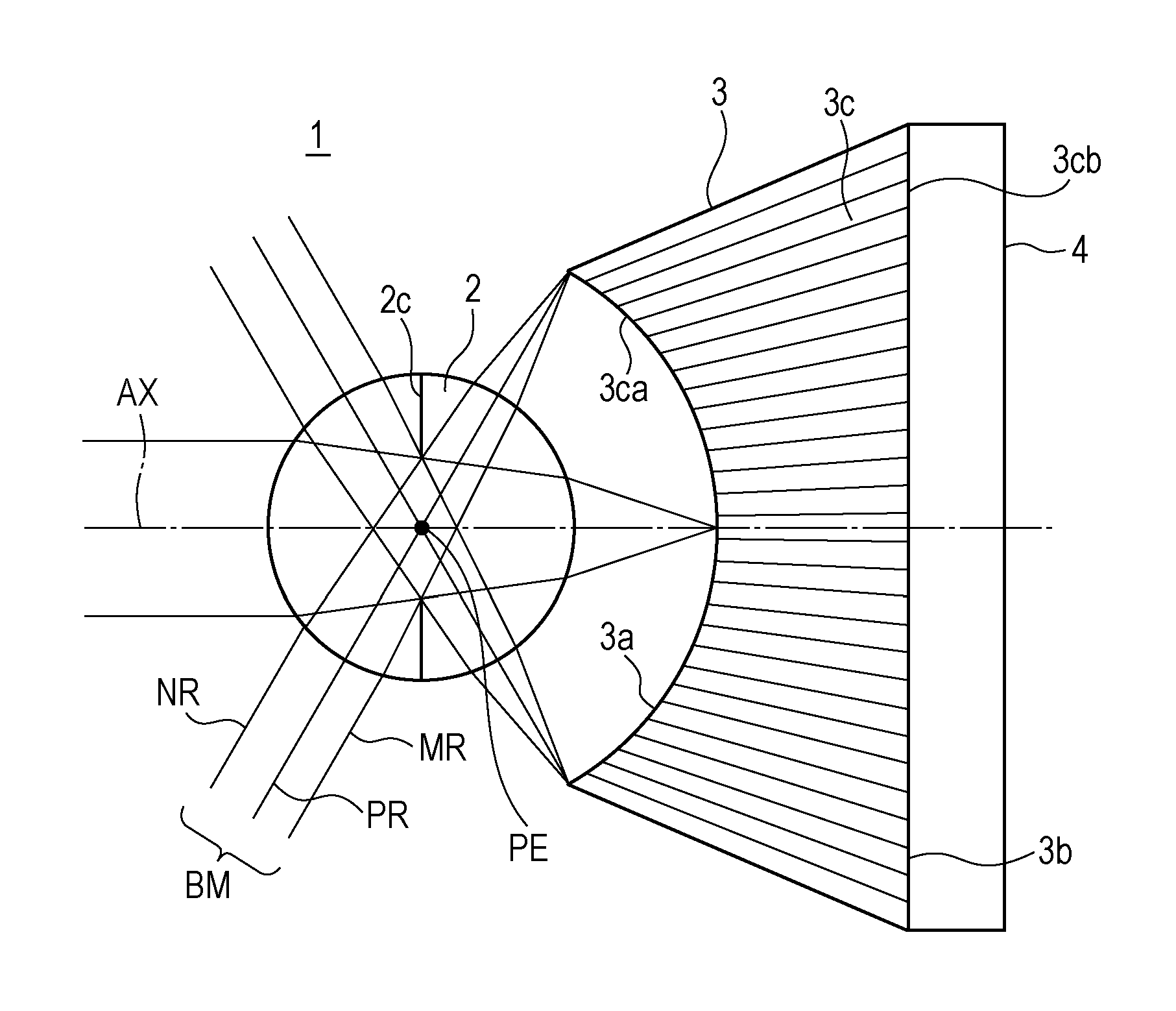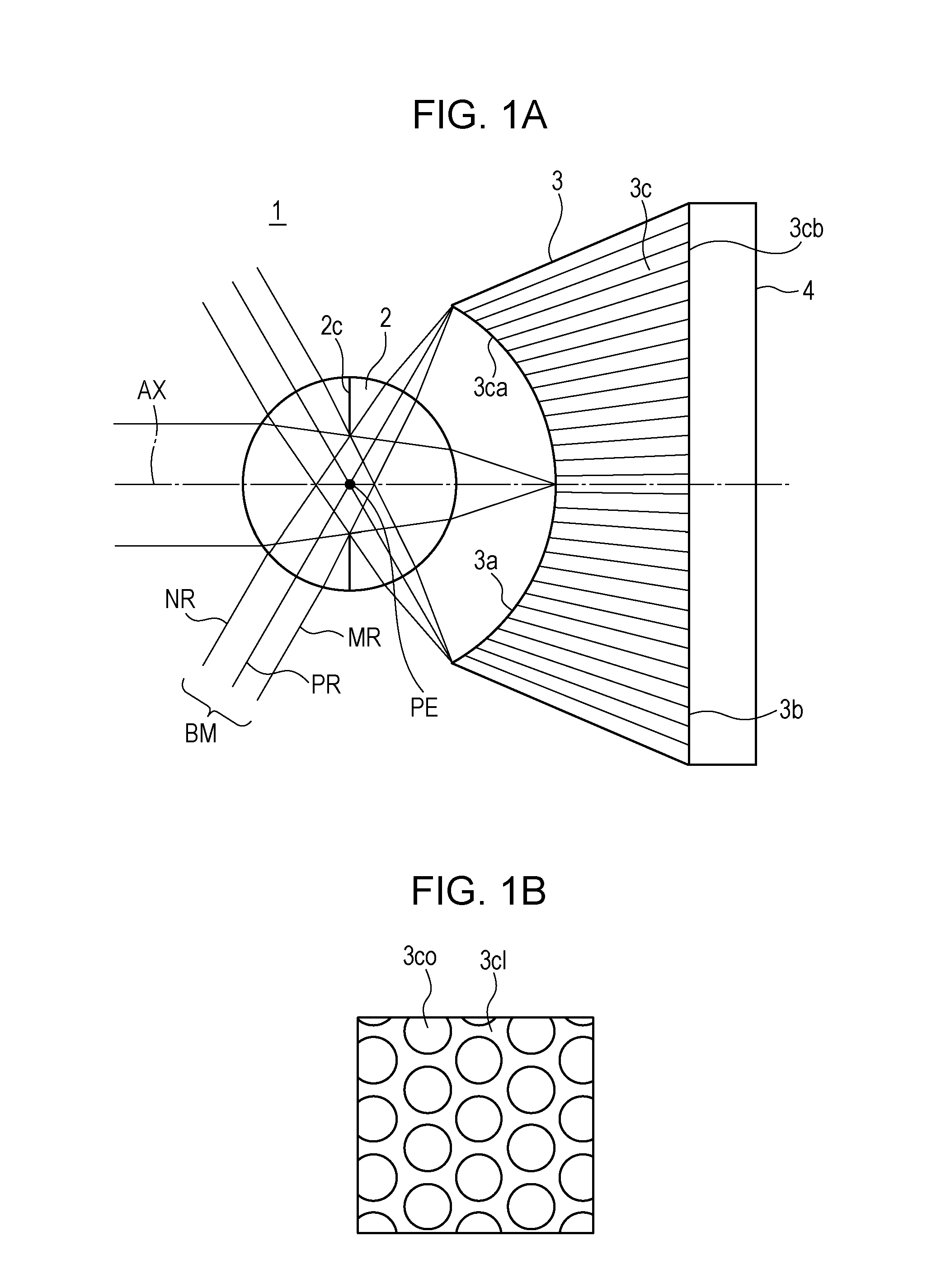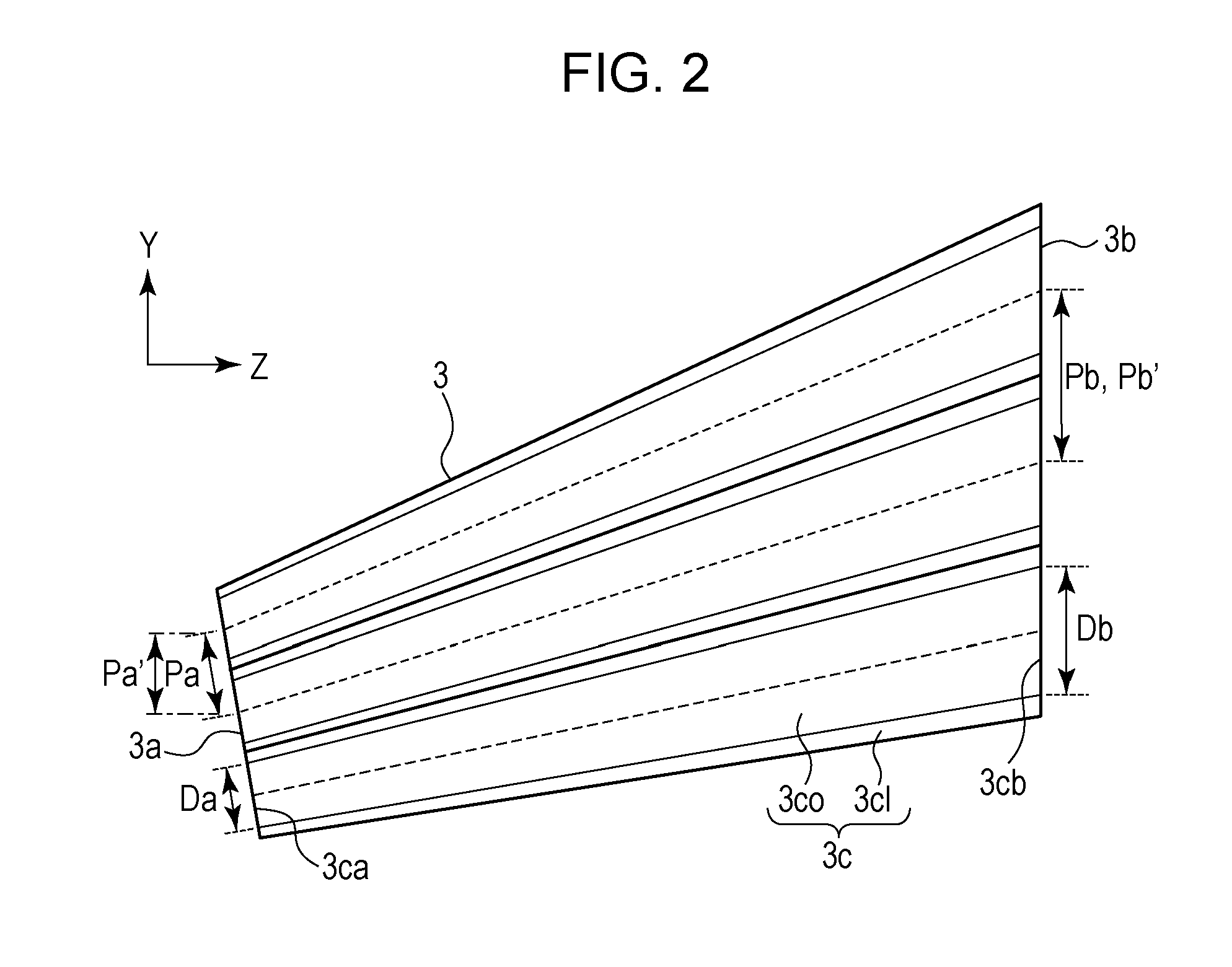Imaging device
a technology of imaging device and image, which is applied in the direction of color television details, television systems, bundled fibre light guides, etc., can solve the problem of difficult to reduce the distortion of an image occurring
- Summary
- Abstract
- Description
- Claims
- Application Information
AI Technical Summary
Benefits of technology
Problems solved by technology
Method used
Image
Examples
first exemplary embodiment
[0062]An example of an imaging device according to the present exemplary embodiment is illustrated in FIG. 1. In the present exemplary embodiment, the elements (1) and (3) described above are changed in accordance with the distance from the optical axis AX. FIG. 4 illustrates an example of the optical fiber bundle 3 to be used in the present exemplary embodiment.
[0063]As illustrated in FIG. 4, Pa1 represents the distance, along the light-incident surface 3a, between the centers of two optical fibers that are adjacent in the Y-direction and that are located closer to the optical axis AX of the ball lens 2. In a similar manner, Pb1 represents the distance, along the light-exit surface 3b, between the centers of the stated pair of optical fibers. In this case, a value Rpt corresponds to a value Pb1 / Pa1, which is the ratio of the distance Pb1 between the centers, along the light-exit surface 3b, of the two adjacent optical fibers that are closer to the optical axis AX of the ball lens 2...
second exemplary embodiment
[0089]The present exemplary embodiment differs from the first exemplary embodiment in the configuration of the optical fiber bundle 3. Specifically, in the first exemplary embodiment, the axes of the entire optical fibers 3c intersect with the optical axis AX at one point (PF). In the meantime, in the present exemplary embodiment, the point at which the axis VF of the optical fiber 3c intersects with the optical axis AX differs depending on the distance from the optical axis AX. The rest of the configuration is identical to that of the first exemplary embodiment, and the configuration of the imaging device is identical to the configuration in the schematic diagram illustrated in FIG. 1.
[0090]As illustrated in FIG. 7, as an optical fiber 3c is farther from the optical axis AX, the position of the point of intersection of the axis VF of the optical fiber 3c and the optical axis AX is closer to the optical fiber bundle 3. To be more specific, three optical fibers 3c1, 3c2, and 3c3 will...
third exemplary embodiment
[0102]The present exemplary embodiment differs from the second exemplary embodiment in that the angle of view is increased and the configuration of the optical fiber bundle 3 is changed. Specifically, the maximum angle of view in an imaging device according to the present exemplary embodiment is 60.0 (deg), which is greater by 10.0 (deg) than the maximum angle of view of the imaging device according to the second exemplary embodiment. As the angle of view is increased, the amount of distortion increases accordingly. Therefore, the configuration of the optical fiber bundle 3 is changed from the configuration of the optical fiber bundle according to the second exemplary embodiment. Specifically, as illustrated in FIGS. 9C and 9D, the value Rp and the value Rt in the optical fiber bundle with respect to the angle of view differ from those in the optical fiber bundle according to the second exemplary embodiment. Specifically, it is not that the value Rp and the value Rt increase as the ...
PUM
 Login to View More
Login to View More Abstract
Description
Claims
Application Information
 Login to View More
Login to View More - R&D
- Intellectual Property
- Life Sciences
- Materials
- Tech Scout
- Unparalleled Data Quality
- Higher Quality Content
- 60% Fewer Hallucinations
Browse by: Latest US Patents, China's latest patents, Technical Efficacy Thesaurus, Application Domain, Technology Topic, Popular Technical Reports.
© 2025 PatSnap. All rights reserved.Legal|Privacy policy|Modern Slavery Act Transparency Statement|Sitemap|About US| Contact US: help@patsnap.com



